Key features
After a series of articles with AIO liquid coolers, I have prepared a change for you today. We will test the new flagship air cooler MasterAir MA824 Stealth from Cooler Master. This cooler boasts impressive specs and promises extremely high efficiency that should rival the best on the market. So I’m really curious about it, but before we torture it on a hot CPU, let’s take a closer look at it.
Key features of the cooler
Upon first glance at the MasterAir MA824 Stealth, it is clear that this cooler is designed for the most powerful processors with high heat output. Design-wise, it is a dual-tower cooler with a slightly asymmetrical shape to ensure better compatibility with RAM thanks to the cutout in the front tower. But of course it also depends on the position of the front 120mm fan and the height of your memory modules. A 135mm fan with a round frame is factory fitted between the two towers. The eventual replacement of this fan is not quite easy, you need to remove the cover on the top of the cooler at the risk of deforming the top fins and generally I can’t recommend it too much. The Stealth moniker on this cooler refers to the black finish on all surfaces of the cooler except the coldplate and the absence of any RGB LEDs. There is also a variant with a lighted front fan, called MasterAir MA824 Stealth 30th Anniversary Edition.
The two large aluminium fin bundles are intersected by a total of eight thick copper heatpipes of different diameters and this is where the really interesting part of the cooler begins. The manufacturer refers to these heatpipes as composite with a combination of grooves and a powder coated inner tube surface to maximize heat transfer area, and also as superconducting (not the same as electrical superconductivity). You may have seen reports from this year’s Computex where this cooler was given a thermochromic coating to demonstrate the heat distribution in the heatsink. Heatpipes also have a D profile near the base for a larger contact area with the CPU heat spreader and smaller gaps between the pipes. The large coldplate is also copper and comes with a layer of thermal paste from the factory.
Another design element of interest is the pair of bolts that run through both sets of fins. This makes it unnecessary to remove the fans when installing the cooler on the mounting frame around the CPU socket. The screws are also fitted with springs at their end to optimize the cooler’s pressure on the CPU IHS. An attractive cosmetic feature is the top cover of the cooler, which is made of brushed aluminium and features an embossed manufacturer’s logo. The overall build quality of the cooler is of a very high standard and there is nothing to complain about.
The cooler comes with standard accessories that include mounting systems for installing the cooler on current CPU sockets. You will also find a fork for the fans and a nice bonus is a handy screwdriver. Of course, there is also a clear installation guide.
However, the installation is unfortunately a weakness of this cooler, at least when it comes to installation on Intel LGA 115x/1200/1700 platforms. The supplied plastic backplate is unfortunately too malleable and I would have appreciated a metal plate for higher sturdiness and prevention of excessive deformation of the motherboard due to the considerable weight of the entire cooler. Another complaint I have is the size of the nuts for attaching the mounting system arms. Here I would like a properly robust design, the supplied nuts are small and cut into the fingers. And thirdly, I have strong complaints about the lack of thermal paste paste in the package. You only have that which is already factory-applied on the coldplate of the cooler. For such a premium product, this is an unnecessary saving in an inappropriate place.
Cooler and fan parameters
MasterAir MA824 fits nicely into the highest class of air coolers with its size and weight. The cooler supports all current CPU sockets except Threadripper, boasts a five-year warranty and although its price tag is relatively high, it is acceptable for a high-end cooler. Just beware of the overall height of the cooler because of the position of the front fan if you have RAM modules taller than 42mm.
| Cooler | Cooler Master MasterAir MA824 Stealth | Noctua NH-D15 | DeepCool Assassin III | |
| Supported sockets | Intel LGA 115x, 1200, 1700, 20xx; AMD AM4/AM5 | |||
| Height | 166 mm | 165 mm | 165 mm | |
| Width | 151 mm | 150 mm | 140 mm | |
| Depth with fan | 162 mm | 161 mm | 161 mm | |
| Weight | 1630 g | 1320 g | 1464 g | |
| Maximum RAM height | acc. to front fan position (keep in mind the cooler's total height) | |||
| MSRP | 109 EUR | 99 EUR | 89 EUR |
Cooler Master uses two fans from the Mobius series, which were recently tested by my colleague Samák. Here, however, it is a non-OC version with a slightly modified speed range and, unlike the OC version, there is no problem with minimum speeds with PWM control.
| Fan | Mobius 135/120 | Noctua NF-A15-HS | DeepCool TF-140S | |
| Bearing | LDB | SSO2 | fluidné | |
| Speed range | 0–1550/1950 rpm | 300–1500 rpm | 400–1400 rpm | |
| Max. airflow | 108.0/107.2 m3/h | 140.2 m3/h | 153.5 m3/h | |
| Max. static pressure | 1.92/2.69 mm H2O | 2.08 mm H2O | 1.79 mm H2O |
- Contents
- Key features
- Measurement methodology
- Results – 36 dBA
- Results – 39 dBA
- Results – 42 dBA
- Results – 45; 48 and 51 dBA
- Results – maximum speed
- Conclusion and evaluation





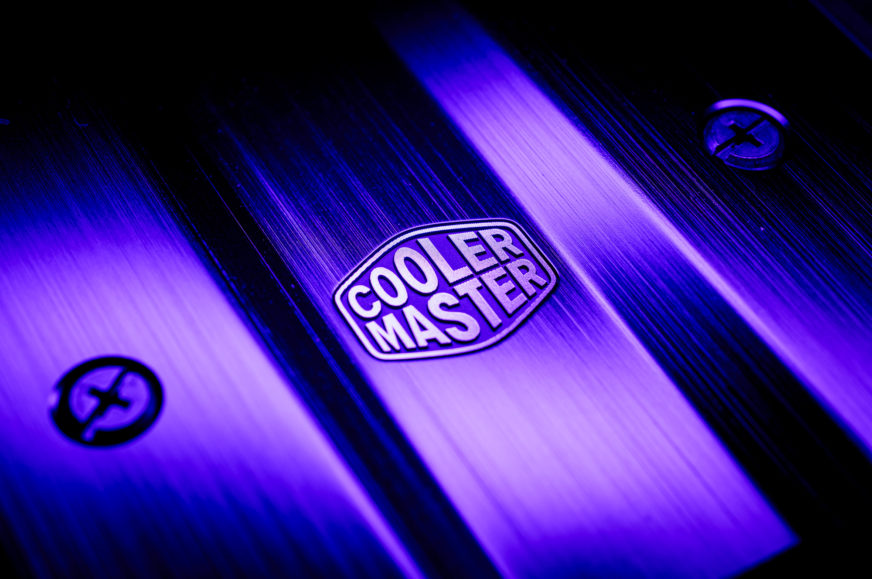
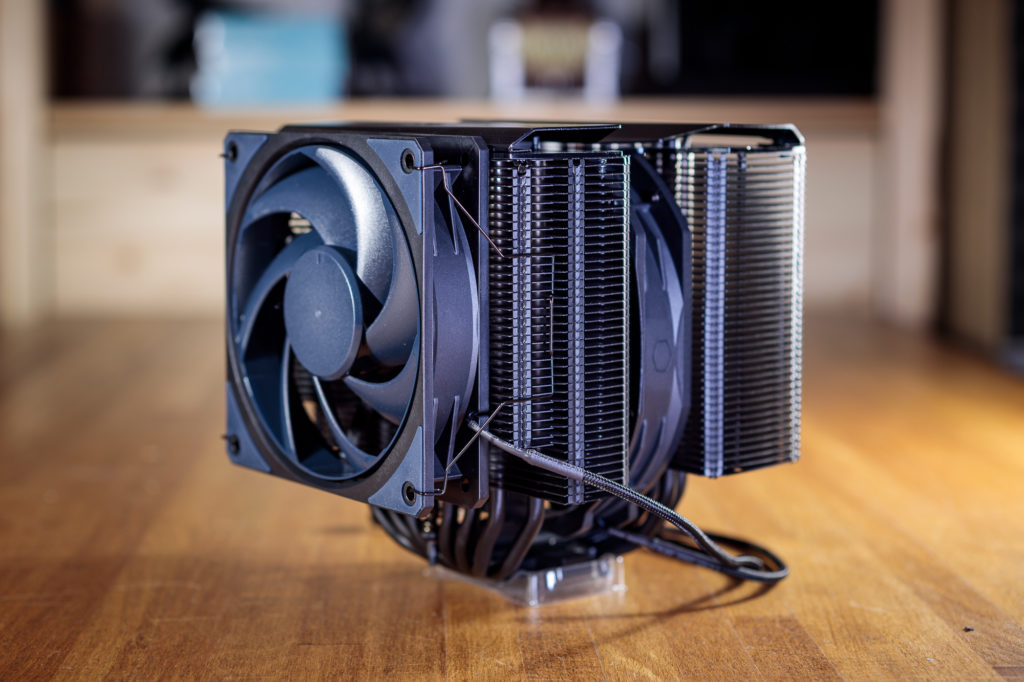
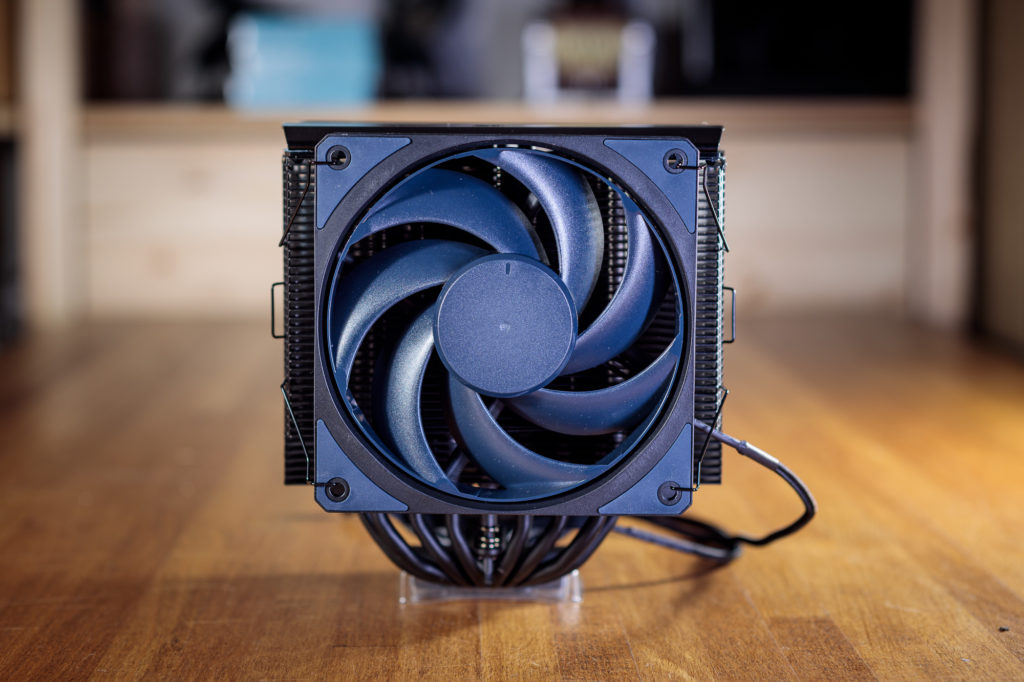
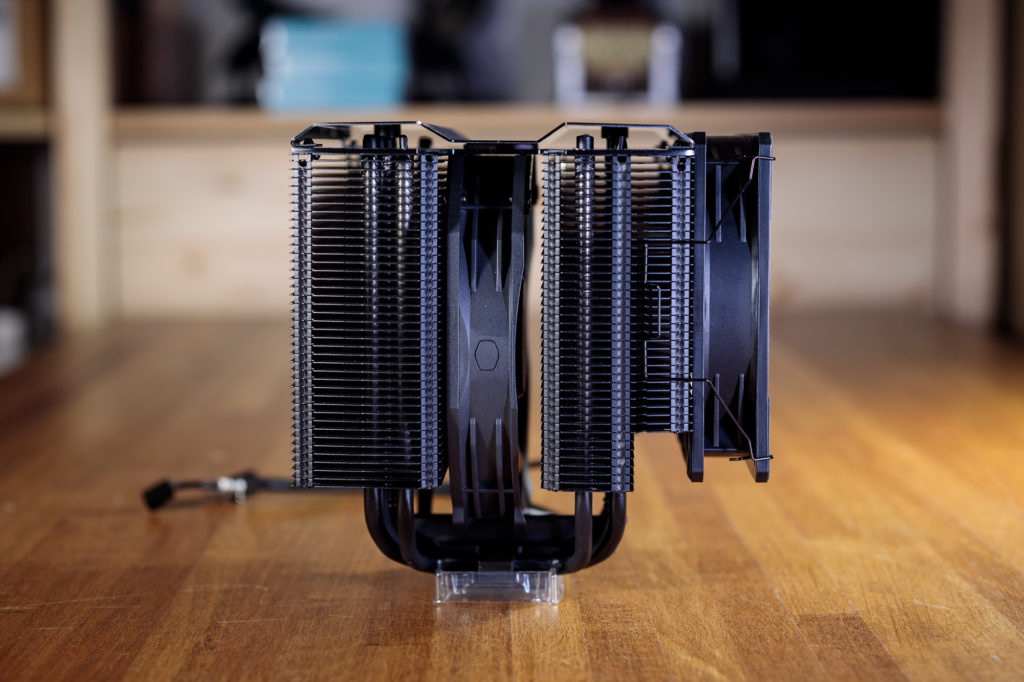
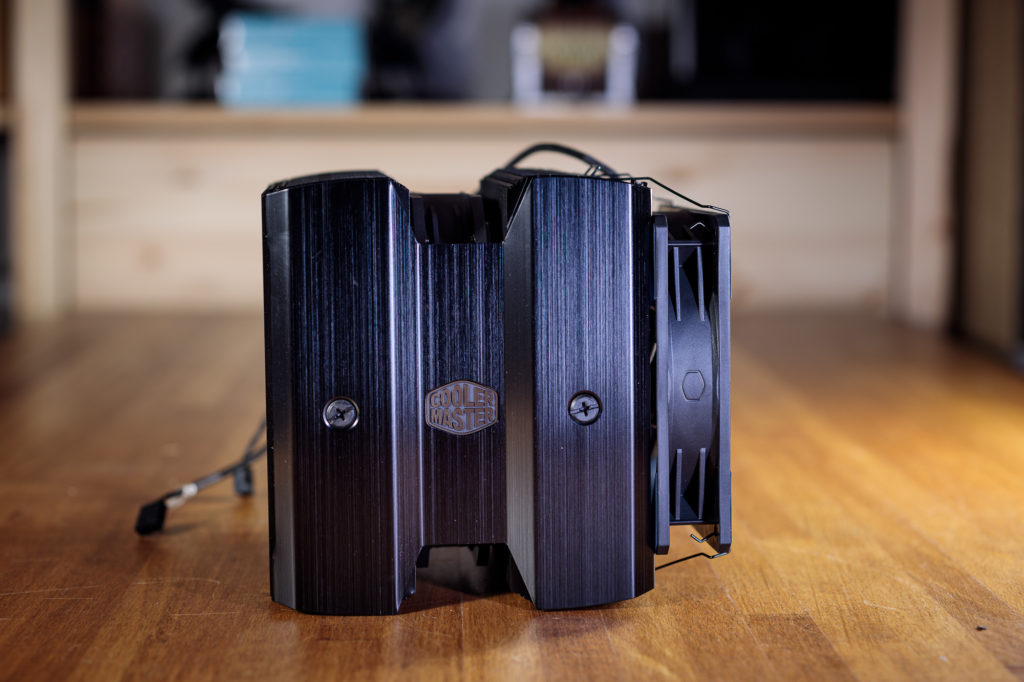
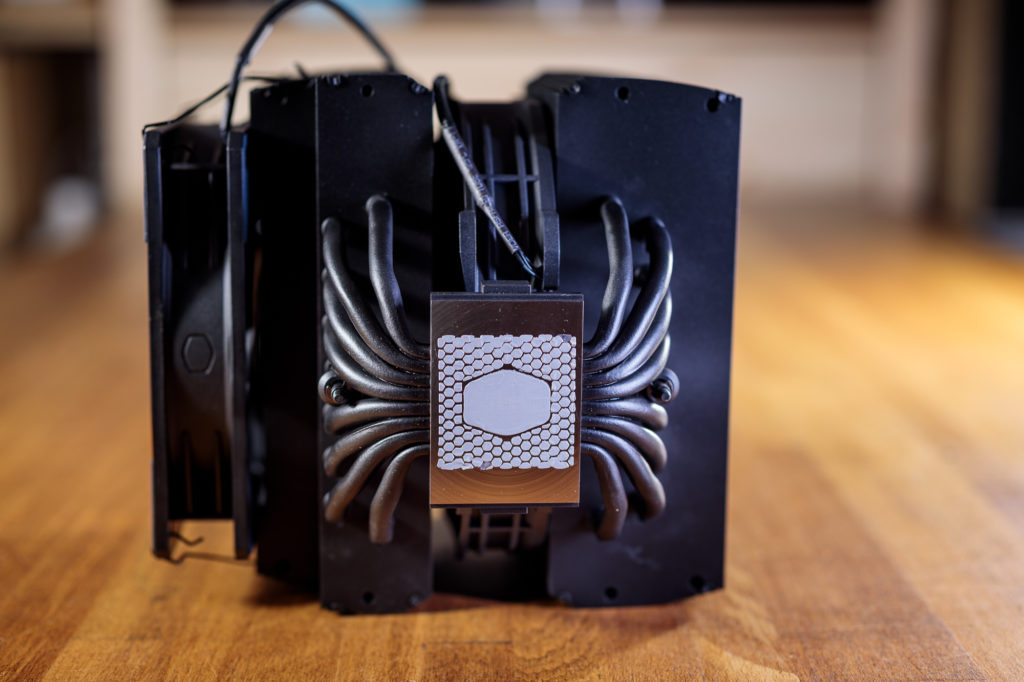
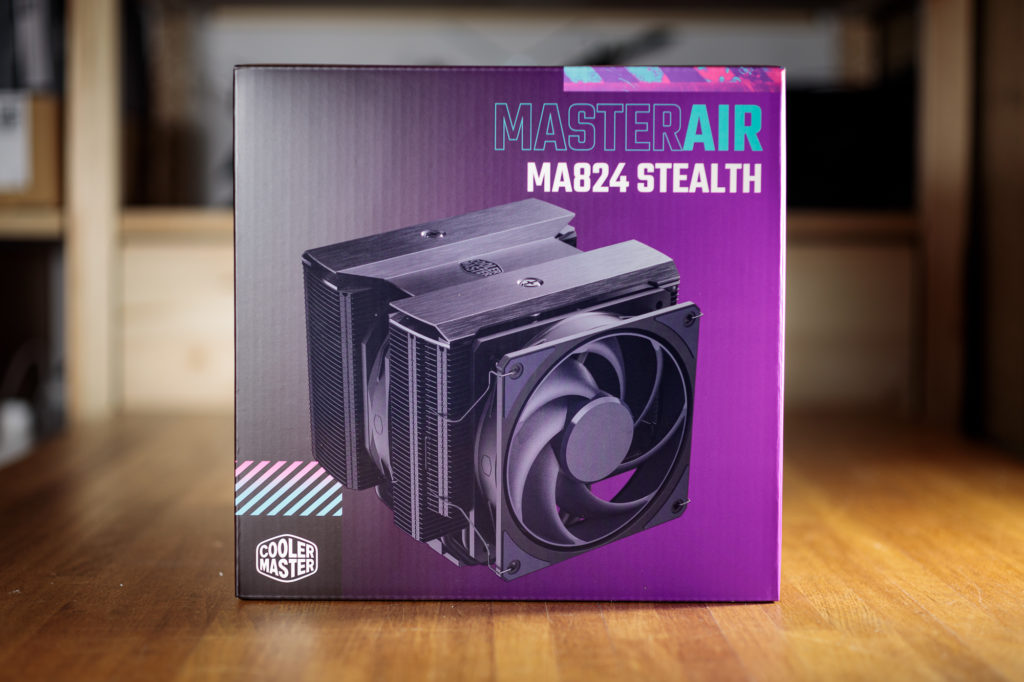
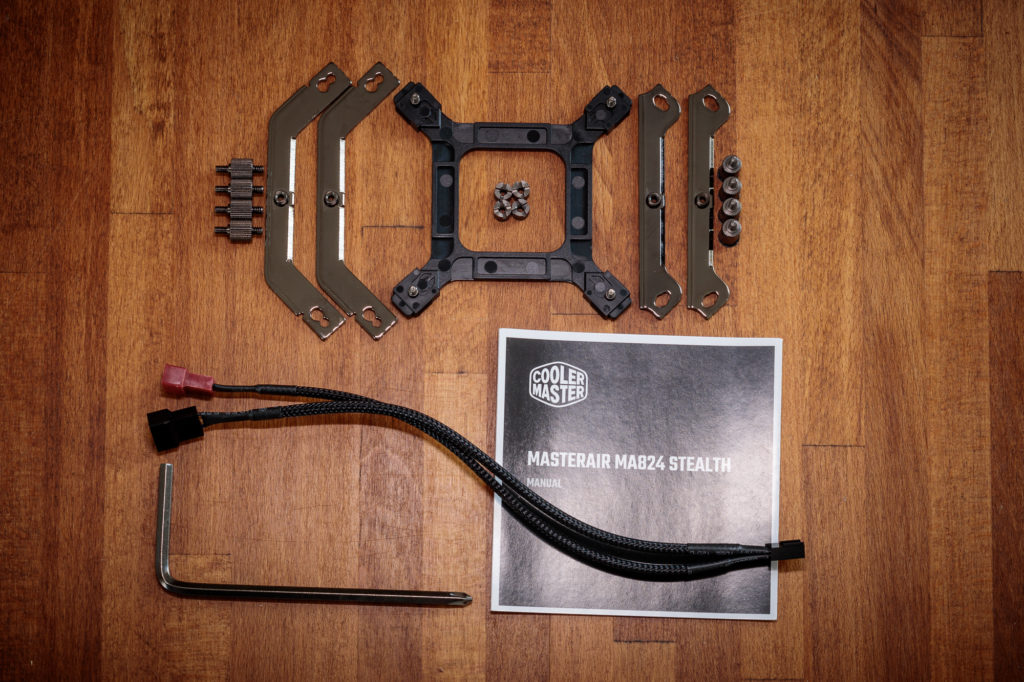
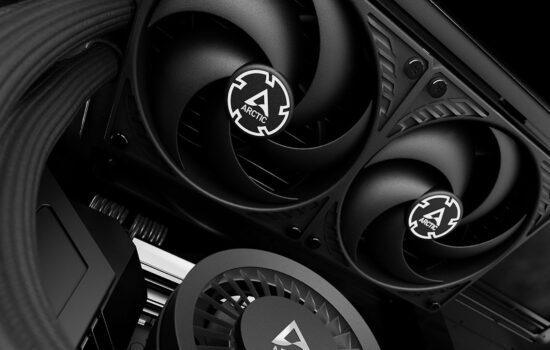





Are heatpipes soldered to fins?
Hello.
It does not seem so, even after close inspection with macrolens. But it’s difficult to be 100% sure, so I’ll validate this with CoolerMaster HQ, just to be sure. But if the HP were soldered, I would guess that marketing dept. would be boasting such feat on the MA824 website…
The absence of holes in contact with the heatpipes is a big indicator that the fins are not soldered.
That’s not necessarily a bad thing though. From what I have read, good press-fit fins can perform just as good as soldered ones (some examples are this cooler, the recent Deepcool Assassin IV, as well as the older Thermalright Silver Arrow), and are not easy to manufacture either since they require tight tolerances.
The main advantage of soldered fins are their supposedly better durability and performance over time.
Yes, the fin soldering does not necessarily have any impact on the cooling performance.
I once tested the Prolimaltech Megahalems rev. C and Prolimatech Megahalems Basic 81. As far as I remember (it’s been more than 10 years and I’m only vaguely fishing from memory…), the only difference besides the fins surface treatment (they were nickel-plated only on the more expensive Megahalems model) was the different contact of the fins with the heatpipe. The “only” stamp pressed Basic 81 achieved practically the same cooling performance. When I look in the archive of these tests, it was weaker, but only by a hair. In tests on a processor with a power draw of over 200 W, the difference in cooling performance was never higher than 1 °C.